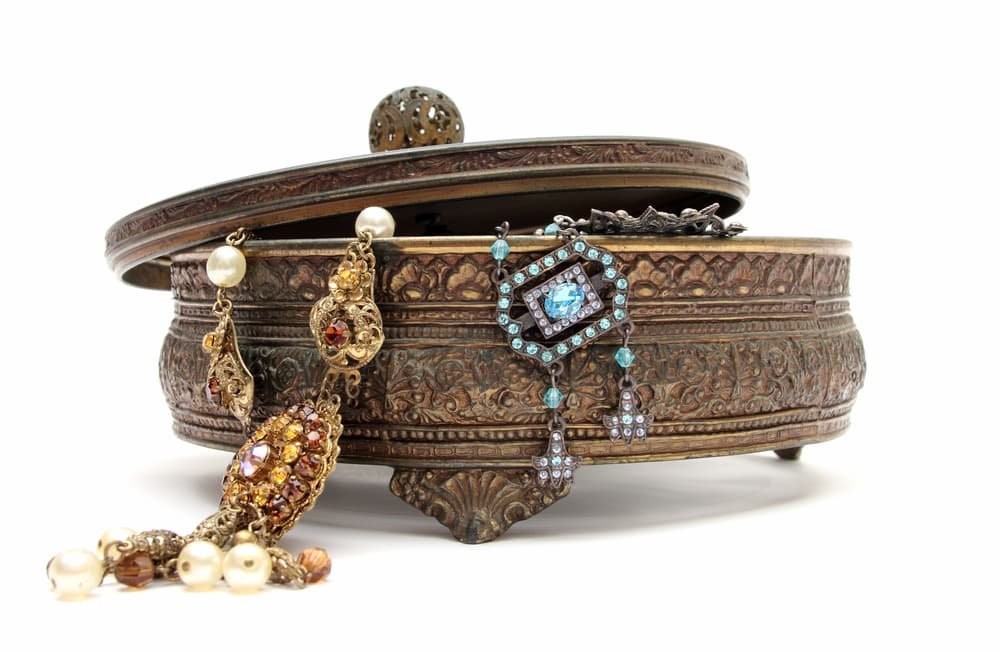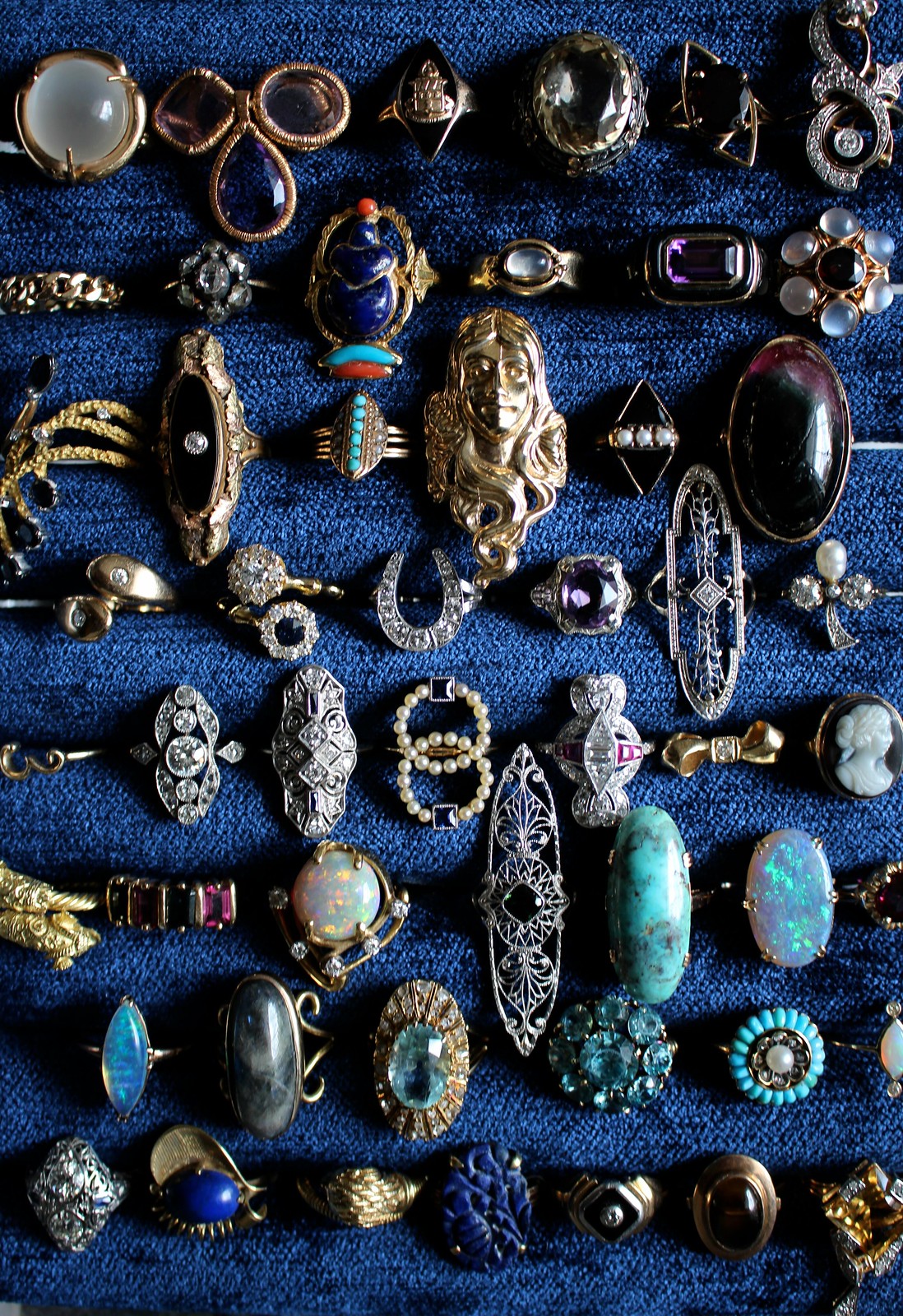Browse a exclusive collection of antique rings austin with ornate craftsmanship.
The Remarkable Globe of Vintage Fashion Jewelry: Diving Into Its Numerous Classifications and Features
Vintage jewelry represents an exciting intersection of creativity and background, encapsulating the essence of different periods via its elaborate layouts and products. Each group, from the charming Victorian items to the cutting-edge Art Deco creations, discloses not only aesthetic choices yet also cultural narratives of the moments. Comprehending the identifying characteristics of these pieces, together with their remarkable products and gemstones, opens a window into the past that is both informing and fascinating. antique rings austin. As we discover these aspects better, one might question what concealed tales exist within the exquisite craftsmanship of each antique jewel.
Historical Ages of Antique Jewelry
Antique precious jewelry is delicately connected to the historical periods in which it was developed, mirroring the creative patterns, cultural worths, and technical developments of those times. The evolution of jewelry layout can be mapped through various noticeable ages, each marked by distinctive designs and materials.
The Georgian period (1714-1837) is defined by elaborate designs and making use of natural motifs, usually integrating gemstones such as garnets and rubies. antique jewelry stores austin tx. Following this, the Victorian duration (1837-1901) saw the introduction of nostalgic fashion jewelry, with layouts that commonly conveyed individual meanings, such as necklaces and mourning items
The Edwardian era (1901-1910) welcomed beauty, making use of platinum and delicate lattice work, while Art Nouveau (1890-1910) concentrated on organic kinds and the use of enamel, mirroring the influence of nature.
The Art Deco duration (1920s-1930s) introduced geometric shapes and vibrant colors, showcasing innovations in craftsmanship and products. Each of these eras not just highlights the artistic advancement of its time but likewise acts as a reflection of the social and social changes that influenced the world of precious jewelry. Understanding these historic contexts improves the gratitude of antique fashion jewelry today.
Trick Qualities to Recognize
When evaluating antique jewelry, several essential qualities can assist determine its age and authenticity. The materials used are essential; pieces from various periods usually include certain metals and gemstones. As an example, Victorian precious jewelry regularly includes gold, while Art Deco items may utilize platinum and vibrant tinted stones.
Next, workmanship is a substantial sign. Handcrafted things, typical in earlier periods, exhibit one-of-a-kind flaws and details that mass-produced items lack. antique engagement rings austin. Examining the setup and rock placement can disclose indications of handwork, such as irregular prongs or differing stone forms
Additionally, hallmarks and stamps play a crucial role in verification. Lots of antique pieces birth marks indicating the steel's purity and the supplier's origin, which can give useful insights right into the jewelry's history.
Last but not least, style concepts typically mirror the age's visual trends. As an example, Art Nouveau is characterized by streaming lines and all-natural types, while Retro precious jewelry embraces strong, geometric forms. By analyzing these crucial characteristics-- materials, workmanship, characteristics, and design themes-- enthusiasts and enthusiasts can better establish the credibility and historical relevance of antique jewelry items.
Popular Antique Fashion Jewelry Groups
Various classifications of antique jewelry display the abundant history and diverse styles that have progressed with time. Among the most prominent classifications are Victorian, Art Nouveau, Edwardian, and Art Deco, each mirroring the visual fads and social influences of their respective periods.
Victorian jewelry, covering from 1837 to 1901, is defined by elaborate styles and nostalgic concepts, usually incorporating symbolism and elaborate craftsmanship. Art Nouveau, which thrived between 1890 and 1910, emphasizes organic forms, flowing lines, and nature-inspired motifs, often featuring enameling and innovative techniques.

Additionally, there are certain groups like Georgian and Vintage precious jewelry, each with unique qualities and historic significance. Collection agencies and fanatics appreciate these classifications not just for their elegance but likewise for the tales they inform about the eras in which they were produced.

Notable Materials and Gemstones
Checking out noteworthy products and gems used in antique precious jewelry exposes the intricate workmanship and aesthetic worths of different eras. Vintage jewelry showcases a varied range of products, each offering special characteristics and value. Gold and silver, widespread for their malleability and luster, have actually been favored for centuries, often adorned with intricate inscriptions or lattice work.
Gemstones likewise play a pivotal role in specifying recommended you read the allure of antique items. Rubies, revered for their radiance, were generally established in Victorian jewelry, highlighting both luxury and status. Tinted gemstones such as sapphires, emeralds, and rubies came to be icons of romance and were commonly included into elaborate styles throughout the Art Deco duration.
Additionally, less traditional products like enamel and pearls arised, adding depth and structure to lots of layouts. Enamel techniques, particularly in the Renaissance, showcased dynamic shades and thorough scenes, while pearls, wanted for their natural beauty, were often utilized in both pendants and jewelry.
The selection of products and gems in antique precious jewelry not just mirrors the artistic trends of the time but also offers insight into the social and cultural values of the eras in which these pieces were created.
Caring for Antique Parts
Correct treatment for antique precious jewelry is important to preserve its beauty and integrity over time. Each piece informs a tale, usually mirroring the workmanship of a details age, and therefore needs specific interest.
To start, it is vital you can try this out to keep antique jewelry in a regulated atmosphere, away from direct sunshine and humidity. Normal cleansing is important, yet must be approached with care; prevent harsh chemicals and unpleasant materials.

Specialist inspections and upkeep can additionally go to website be beneficial. A qualified jeweler can assess for loose rocks, damaged setups, or various other concerns, making certain the long life of these valued products. By complying with these care guidelines, antique jewelry can continue to be not just a cherished treasure but also a stunning depiction of art and background.
Final Thought
The exploration of antique jewelry discloses a varied landscape shaped by historical periods, imaginative motions, and distinct workmanship. Each group, from Victorian to Art Deco, showcases special qualities and materials that mirror the cultural and artistic worths of its time. Comprehending these elements not just improves appreciation for antique items however also emphasizes the value of preservation. Correct care ensures the long life of these artifacts, permitting future generations to experience the charm and significance of antique precious jewelry.